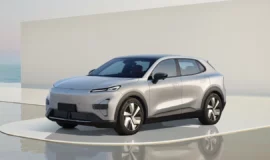
After receiving a tremendous response to our blog on the Top 9 Fastest Cars in the World, we have decided to further captivate our fast car enthusiast readers by delving more deeply into the fastest cars of both the present and the 20th century. We hope you enjoy reading this blog as much as you have enjoyed our earlier blogs on superfast cars.
Duesenberg Model SJ/SSJ Ruled 1930s

Duesenberg, renowned as the pioneer of the first supercar, introduced the supercharged Model J versions, SJ and SSJ, in 1932. These models featured a supercharged 6.9-liter straight-eight engine, producing 320 and later 400 horsepower, surpassing the naturally-aspirated version’s 265. Despite a low 5.7:1 compression ratio, they achieved speeds of 135 to 140 mph (217 to 225 km/h). The three-speed manual, lacking synchro-mesh, enabled 0 to 60 mph (0 to 97 km/h) in around eight seconds, and 100 mph (161 km/h) in 17 seconds. Only 36 supercharged Duesenbergs were produced.
1940s: Jaguar XK120

In 1948, Jaguar introduced the XK120, considered the first contemporary-styled Jaguar, succeeding the SS Jaguar 100. With a sleek design, it set the tone for Jaguar sports cars. The XK120 featured a 3.4-liter inline-six engine, producing 160 horsepower and 195 pound-feet (264 Nm) torque, connected to the rear wheels through a four-speed manual. Designed to surpass the 120-mph (193 km/h) speed barrier, Jaguar claimed a top speed of up to 125 mph (201 km/h) depending on the body style. On May 30, 1949, the XK120 set an average speed record of 132.6 mph. With a tonneau cover, the XK120 Roadster reached 135 mph (217 km/h), slightly slower than the discontinued Duesenberg.
Aston Martin DB4 GT Ruled the Fabulous 50s

The first James Bond movie, ‘Dr. No,’ came out in 1962; however, long before that, Aston Martin had already proven its worth.
In the 1950s, there was a focus on stylish and high-performance cars, and Aston Martin played a significant role. The 1958 DB4 became the foundation for the fastest car of the 1960s.
The Aston Martin DB4 GT, a lighter and more performance-focused version, featured an inline-six engine enlarged from 223 to 228 cubic inches (3.67 to 3.75 liters). This led to an increased power from 240 to 302 horsepower and torque rated at 269 pound-feet (366 Nm). Paired with a four-speed manual, the DB4 GT reached a top speed of 151 mph (243 km/h) in 1959, accelerating from 0 to 60 mph (97 km/h) in 6.1 seconds.
Swinging Sixties: Ferrari 365 GTB/4 “Daytona”

In the late 1960s, Ferrari introduced the iconic Daytona, representing the epitome of their V-12 tradition. The Daytona featured a 4.4-liter V-12 engine with six two-barrel Weber or Solex carburetors, producing 347 horsepower at 7,500 RPM and 318 pound-feet (431 Nm) torque at 5,500 RPM.
Despite being a luxurious gran tourer, the 365 GTB/4 Daytona weighed 2,646 pounds (1,200 kg). Its aerodynamic design contributed to a remarkable top speed of 174 mph (281 km/h) in 1968. With a five-speed manual transmission, the Daytona could accelerate from 0 to 60 mph (97 km/h) in just 5.4 seconds.
1970s: Lamborghini Countach LP400

In the car enthusiast world, the famous rivalry between Enzo Ferrari and Ferruccio Lamborghini led to the creation of the Lamborghini Countach, designed to compete with Ferrari. Introduced in 1974, this wedge-shaped supercar remained in production for 16 years.
Even the earlier LP400 versions were impressive, earning the title of the fastest production car. Powered by a mid-mounted 3.9-liter V-12 producing 370 horsepower, transmitted through a five-speed manual to the rear axle, the Countach reached a top speed of 179 mph (288 km/h). Despite its less-than-aerodynamic design, the Countach stood out as a symbol of performance and style.
Ferrari F40 and the 1980s

Considered by many as the greatest supercar, the Ferrari F40 was Enzo Ferrari’s final project. Envisioned as the ultimate performance car, this Ferrari was built on a tubular steel space frame with a composite body. The F40 weighed only 2,765 pounds (1,254 kg). Its 2.9-liter twin-turbo V-8 produced 478 horsepower, possibly exceeding 500 horsepower. Paired with a five-speed manual, the F40 accelerated to 60 mph (97 km/h) in 4.2 seconds and reached a top speed of 201 mph (324 km/h) in 1987, earning the title of the fastest production car of its time.
McLaren F1 in the Information Age

Gordon Murray, the famous automotive designer and engineer, created the iconic McLaren F1 in 1992, showcasing automotive perfection. This groundbreaking car introduced a unique three-seat layout, and its BMW-derived V-12 was so balanced it didn’t need a flywheel.
With 627 metric horsepower and a six-speed manual transmission, the F1 set a record as the fastest production car with a normally-aspirated engine. It achieved a remarkable top speed of 243 mph (391 km/h), with an average of 204.1 mph (386.4 km/h) from three runs, solidifying its status as a legendary piece of automotive history.
SSC Ultimate Aero TT and the New Century

In 2004, Shelby Super Cars introduced the Ultimate Aero, an American mid-engine supercar powered by a Corvette V-8. The design was reminiscent of the Lamborghini Diablo, with the most powerful version, the Ultimate Aero TT, released in 2009.
The Ultimate Aero TT featured two turbochargers, producing an impressive 1,287 horsepower and 1,106 pound-feet (1,500 Nm) of torque, coupled with a six-speed manual transmission. This combination enabled the supercar to reach a top speed of 257 mph (415 km/h), surpassing the Bugatti Veyron of the same period.
20 Tens: Koenigsegg Agera RS

In 2002, Koenigsegg’s CC8S approached the top speed record with an impressive 240 mph (386 km/h), almost rivaling the McLaren F1. However, in 2015, Koenigsegg introduced the Agera RS, featuring a 5.0-liter twin-turbo V-8 producing 1,341 horsepower and 1,011 pound-feet (1,371 Nm) of torque.
Power was transmitted to the rear wheels through a lightweight seven-speed automatic (DCT) weighing just 178 pounds (81 kg). On November 4, 2017, the Agera RS set a world record for production cars, reaching speeds of 277.8 mph (446.97 km/h) on average, with the highest recorded speed being 284.55 mph (457.49 km/h).
2020s (So Far): Bugatti Chiron Super Sport 300+

In 2019, Bugatti introduced the Chiron Super Sport 300+, an extended “long-tail” version capable of over 300 mph (483 km/h). Production started in 2020, featuring a 248.9mm longer body for added high-speed stability.
Powered by an 8.0-liter quad-turbo W-16 engine generating 1,577 horsepower and 1,180 pound-feet (1,600 Nm) of torque, the Chiron Super Sport 300+ broke records by reaching an astounding 304.77 mph (490.47 km/h) at Volkswagen’s Ehra-Lessien test track in Germany.
We hope you liked reading this blog as well. Feel free to share your thoughts on what you liked and disliked about this blog, and don’t forget to leave suggestions for more similar blogs in the comments section.
Image Credits:
forbes.com
astonmartin.com
en.wikipedia.org
bugatti.com








Leave a Reply